Case Studies.
Add Case Study
Our Case Study database tracks 22,657 case studies in the global enterprise technology ecosystem.
Filters allow you to explore case studies quickly and efficiently.
Download Excel
Filters
-
(6,653)
- (2,601)
- (2,127)
- (945)
- View all
-
(5,642)
- (2,469)
- (1,692)
- (826)
- View all
-
(5,571)
- (2,178)
- (1,766)
- (643)
- View all
-
(5,247)
- (2,179)
- (1,715)
- (1,321)
- View all
-
(2,881)
- (1,448)
- (574)
- (376)
- View all
- View all 15 Technologies
- (1,985)
- (1,985)
- (1,915)
- (1,679)
- (1,629)
- View all 42 Industries
- (8,728)
- (4,742)
- (3,618)
- (3,233)
- (2,947)
- View all 13 Functional Areas
- (3,304)
- (2,787)
- (2,603)
- (2,006)
- (1,630)
- View all 129 Use Cases
- (13,581)
- (5,296)
- (4,272)
- (3,520)
- (2,856)
- View all 9 Services
- (504)
- (432)
- (416)
- (382)
- (301)
- View all 1083 Suppliers
Selected Filters

|
Personal Paraguay Streamlines Administrative Processes with AuraQuantic
Personal Paraguay, a multiservice provider of mobile telephony, fiber optics, IPTV, satellite television, and mobile financial services, was grappling with an overload of administrative procedures. Initially, all information management was carried out manually using office automation programs or printed documents. To reduce paper usage, the company developed an in-house solution to facilitate document collection and accessibility, along with another tool to manage their authorization process. However, the need to reduce the number of tools used, incorporate new technology functionalities, increase productivity, reduce time, and have greater control over activities led the company’s managers to explore the software market in search of a solution that would meet their requirements.
|
|
|
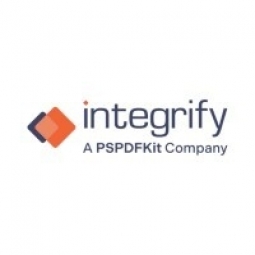
|
Streamlining AP Processes: A Case Study on Animal Humane New Mexico
Animal Humane New Mexico, a nonprofit animal welfare organization, had been considering automating their Accounts Payable (AP) process for years. The organization's goal to go paperless in 2019 was hindered by their paper-heavy AP process. The process involved receiving invoices either through email or direct mail, printing out the document, stamping it, and taking it to another building for coding. After coding, the document was sent back for approval. This process was time-consuming and involved a lot of physical movement of documents between different buildings and departments. The onset of the COVID-19 pandemic and the shift to remote work further complicated the process, necessitating a more streamlined and automated solution.
|
|
|

|
Intelligent Planning across sales and finance at Andbank: A Case Study
Andbank Group, a banking and financial services company with over 90 years of experience in private banking and comprehensive wealth management, was seeking to improve its performance. The bank aimed to integrate its financial planning, analysis, and sales processes while maintaining the unique logic and business rules of each business function. The challenge was to find a solution that could address all financial planning and analysis (FP&A) and sales planning needs across the entire commercial structure, from the CEO to each banker. The bank needed a tool that could transform its management control department from a cost center to a business generation center and empower the organization to manage the profitability of its products and customers with greater agility.
|
|
|

|
Consolidating Financial Data for Efficient Management at Forico
Forico, an integrated timber plantation, forest management, and timber export business based in Tasmania, was grappling with the challenge of managing a large-scale forestry operation. The company oversees more than 170,000 hectares of forest in the island state, a task that necessitates the consolidation of vast amounts of data. The existing data management and reporting methods, primarily spreadsheets and other platforms, were proving inadequate for the high volume of information. The company was in dire need of a more streamlined data management and reporting method that could handle the large data volumes, reduce manual errors, and quickly identify data discrepancies.
|
|
|

|
Revolutionizing HR Planning at Piazza Italia through IoT
Piazza Italia, a leading Italian multi-channel fashion retail enterprise, was facing challenges in its HR department. The company wanted to transform its approach from merely performing tasks to setting challenging objectives and a strategic vision capable of adapting to sudden market changes. The company was operating in a volatile market that often required swift changes to short-term strategies. The traditional KPIs used by the company were mostly focused on internal processes with little orientation towards business results and growth. The completion of goals was defined by accomplishing a set of actions or tasks within a time frame, which did not offer substantial strategic value. From a commercial perspective, Piazza Italia needed to control two large cost items: the cost of sales and the cost of labor. Traditional budgeting tools integrated with payroll and attendance tracking software were found to be inadequate for the company's needs.
|
|
|

|
Pixartprinting's Transformation: Streamlining Cross-Departmental Coordination with Intelligent Planning Platform
Pixartprinting, a major European player in online printing services, was facing challenges in automating its planning processes. The company was using Excel for strategic planning, budgeting, and forecasting processes, but this approach was proving inadequate for the new competitive market challenges. The company was also undergoing a simultaneous change in the ERP system in some of its branches, making it the right time to replace the spreadsheet-based approach with a more advanced solution. The main challenge was the lack of collaboration across departments due to a data-silos approach and information redundancy. This resulted in difficulties in driving planning, forecasting, and business modeling processes. Pixartprinting needed a tool that could provide a comprehensive view of the company’s information, ensure fast responses when querying databases, make scenario simulation easier and more intuitive, and automate relevant planning and analytics processes.
|
|
|

|
Digital Transformation in RDM Group through Intelligent Planning
RDM Group, a leading producer in the recycled cartonboard business, embarked on a complex journey to embed digital intelligence across the entire organization. The Group aimed to incorporate AI, no-touch transactions, augmented reality, and Bot technology into its operations. However, the Group faced challenges with its existing processes. These processes were not integrated, data and insights were stored in silos and only sent electronically on request, and information analysis was manual and ad hoc. The Group needed a solution that would integrate and automate processes, provide real-time visibility of data, introduce descriptive, diagnostic, and predictive analytics practices, and enable data sharing across different departments, professional functions, plants, and headquarters.
|
|
|
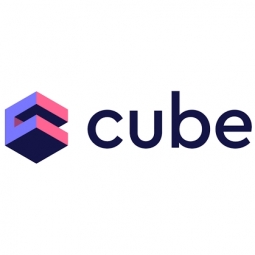
|
Cloud Academy's Accelerated Data Modeling and Reduced Analytics Downtime with Cube
Cloud Academy, a San Francisco-based SaaS startup, was in search of a modern analytics platform to enhance its existing enterprise analytics offering. The company needed a solution that could deliver a seamless, highly available embedded analytics experience based on CI/CD best practices, while also allowing for planned outages for necessary infrastructure maintenance. They also needed to leverage their existing data warehouse and maintain high flexibility in their data modeling to serve both internal and external end users. Prior to Cube, Cloud Academy used a major BI platform for their enterprise embedded analytics UI, and internal stakeholders used the BI platform directly. However, they needed a solution that would allow for greater flexibility in data modeling, security context orchestration, and caching.
|
|
|

|
ShopBack's Journey to Efficient Embedded Analytics with Cube
ShopBack, a leading shopping rewards and discovery platform in Asia-Pacific, faced a significant challenge in analyzing transactions on its sites. The company needed to assess various transactional aspects, including purchase value and sales volume. In January 2020, ShopBack embarked on a new project that required extensive dashboard reporting of aggregated data for both internal and external users. One of the options considered was building an in-house application and storing the data in a graph database. However, the data was highly relational and needed to be pre-aggregated into OLAP cubes for analytics. The company also faced performance issues, with p95 query loading times taking as long as 50 seconds, leading to a poor user experience.
|
|
|
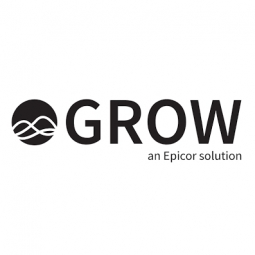
|
Younique Foundation Leverages Grow's BI Platform to Enhance Operations and Increase Donations
The Younique Foundation, a non-profit organization dedicated to helping women recover from sexual abuse, was facing challenges in managing and analyzing their data. They relied heavily on complex spreadsheets, which made it difficult to respond quickly to what their data showed. The organization wanted to understand the pre- and post-retreat experiences of their participants, but lacked an efficient way to evaluate the metrics. Additionally, they were experimenting with various funding sources, including sales of swag items, but found it challenging to measure the impact of these revenue streams. They also needed to accurately track their funding on a daily basis to maintain their non-profit status with the Federal Government, which requires them to raise 33% of their funding through outside sources.
|
|
|
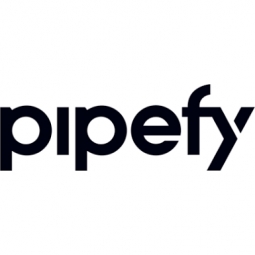
|
Company Combo's Transformation: Delivering 4.5k Monthly Services with No-Code Workflows
Company Combo, a provider of accounting, taxes, and company formation services, faced a complex operation due to the diverse legislation and particularities of the 50 states in the US. Their main workflow involved opening new companies, which required adapting to different scenarios based on the state's legislation. The company also managed around 80 other processes, including opening legal accounts and internal company processes. Prior to implementing Pipefy, Company Combo used a project management tool that made processes hard to visualize and customize. The tech team often needed to create custom code to adapt the software to their unique needs. Managers lacked autonomy to create and improve their processes, and visual tracking of each process’ status was nonexistent. The method they used for tracking was too densely packed with data and offered no real insight. Communication with customers was manual and repetitive, via email or the customer support team, which made it difficult to scale the company’s services.
|
|
|

|
Digital Transformation in Agriculture: Coplacana's Journey from Manual to Automated Processes
Coplacana, the São Paulo State Sugarcane Farmers Cooperative, was facing significant challenges in managing its processes. The cooperative was experiencing rapid growth and needed to improve its operations. The administration teams were using a variety of unconnected tools such as email, Excel, ERPs, and Google Drive to manage their workloads and data. This led to general inefficiency in workflows, repetitive non-scalable manual activities, lack of process visibility and monitoring, and poor communication regarding status updates or request conclusions. The company was also dealing with missed deadlines, bottlenecked processes and subprocesses, and a lack of reports, which reduced visibility over process improvement opportunities. The management was reactive to events and incidents, which further exacerbated the situation.
|
|
|

|
CTA Smart's Transformation: Boosting Sales by 300% with IoT
CTA Smart, a national leader in the control and management of internal fuel supply, was facing significant challenges in scaling their sales and managing their operations efficiently. Despite having a lean structure of about 60 employees, they were handling a high volume of customers, supply points, and fuel loads. In 2019, the lack of standardization and the use of about eight disconnected systems were preventing the commercial team from being agile enough to scale their sales. This lack of connection between systems also impacted other departments’ work, such as finance, customer support, and production. These teams didn’t receive all the information they needed to manage their respective processes efficiently, often delaying deliveries for contracts and services. Furthermore, CTA Smart's top leadership was struggling to consult and control the company's operational metrics due to the lack of integration and clarity of information flows.
|
|
|

|
Digital Transformation and Efficiency Boost at Tempo Assist with Pipefy
Tempo Assist, the largest specialized services company in Brazil, was facing challenges in achieving digital efficiency. One of their main objectives was to invest in technology to improve the experiences of their customers, vendors, and employees. A significant issue was their Accounts Payable to Vendors process, which was manual and handled over email, leading to delays and problems due to the high volume of around six thousand requests monthly. The company was also using an inflexible and unintuitive process management tool, which required the IT team's intervention for any changes or creation of new workflows. As a result, most internal processes were managed over email and spreadsheets, leading to inefficiencies and bottlenecks.
|
|
|
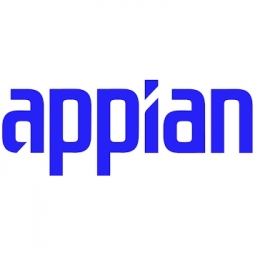
|
Optimizing Operations and Boosting Customer Satisfaction: A Case Study on Stadtwerke Bonn
Stadtwerke Bonn, a utility provider based in Bonn, Germany, was faced with the challenge of reducing operational costs while improving customer satisfaction. A key part of their customer service strategy was a self-service online portal used by customers to report their meter readings. This portal was a crucial part of their meter-to-cash (M2C) operations, which saw 367,000 total meter readings leading to invoices between January 2020 and April 2021. However, the complexity of the system, which also included other contact channels for collecting meter readings such as email, phone notifications, bot-supported system processing, and in-person visits, led to potential delays and errors. To identify areas for process improvement, Stadtwerke Bonn initiated a process mining initiative with Appian.
|
|
|
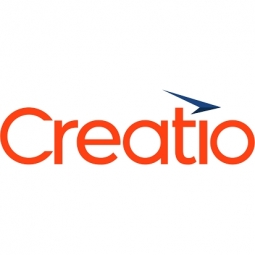
|
School Populo Doubles Lead Conversion Rate with Creatio’s No-code Platform
School Populo, a private school offering professional online and offline tutoring services, was facing challenges with its manual processes. The school was managing payments via Excel and storing customer data in spreadsheets. However, as the school grew, this approach was no longer practical or sustainable. The school was dealing with a vast amount of data, numerous student applications from various sources, and complex learning schedules. These required automation and coordination. The school needed a solution that would support its ambitious growth aspirations. Therefore, the school prioritized system flexibility and scalability during the vendor selection process.
|
|
|

|
Upward Sports: Leveraging Creatio for Enhanced Partnership and Growth
Upward Sports, the world's largest Christian sports league, was facing challenges with its outdated, complex, and code-based CRM solution. The organization, which partners with churches across the U.S. and Canada to bring youth sports ministry to local communities, was struggling with a CRM system that was difficult to operate and required a significant amount of time for process automation. The system was only operable by a limited number of employees, which further complicated matters. The need for a more advanced solution was also driven by the company's desire to improve its time to market.
|
|
|

|
Process Automation: A Game Changer for GHB Farms
GHB Farms, a family-owned and run farm since 1955, faced significant challenges due to their paper-based processes. Despite having structured processes, they were carried out over large volumes of paper, making them hard to track. The approval process was manual and paper-based, requiring approving authorities to be physically present at the farms to approve requests. This led to a significant amount of extra time and effort being put in by the approving authorities to keep the process running. The paper-based system also led to delays in processes such as purchase orders, overtime approvals, and loan approvals, which would get stuck if the approving authority wasn’t around. The farm was in need of a solution that could streamline and automate their processes, reducing the time and effort required and eliminating the need for physical presence for approvals.
|
|
|

|
JDREL: Streamlining Operations with Kissflow
JDREL, a Brazilian software company with 20 years of experience, faced significant challenges in standardizing their day-to-day processes. These processes, including onboarding, shopping, commercial, and ticketing, were largely handled manually, either through paper forms or email. This manual processing led to a high rate of errors, with many items needing to be restarted. Additionally, the processing time was slow, leading to inefficiencies in the company's operations.
|
|
|

|
Automating Processes for Enhanced Efficiency: A Case Study on Lima Cargo City
Lima Cargo City, one of Latin America's most modern logistics hubs, was facing significant challenges due to its reliance on manual processes. Employees were using emails, forms, and spreadsheets to manage processes, which made it difficult to track and maintain customer and supplier information. This lack of a centralized system led to information redundancy, with duplication of information and a high risk of errors. Furthermore, the communication with customers and suppliers was often delayed due to the difficulty in tracking information. These challenges were hindering the efficiency and effectiveness of Lima Cargo City's operations.
|
|
|

|
Facilities Services Company Streamlines Operations with Automation
Nika Solutions, a facilities services company, was grappling with several operational challenges. The company was heavily reliant on manual data entry, which was not only time-consuming but also made accessing real-time data nearly impossible. The risk of misinformation was high due to the manual updating of high volumes of information, leading to errors and missing data. Furthermore, the company was facing a collaboration and integration gap. Information was scattered across thousands of emails, making it difficult for employees to align on strategy and objectives. These challenges were hindering the company's efficiency and productivity.
|
|
|

|
Digital Transformation Enhances Customer Satisfaction at Royal Exchange General Insurance
Royal Exchange General Insurance Company (REGIC), one of Africa’s oldest and largest insurance companies, was facing several challenges due to its paper-based system. The company was struggling with paper-based approvals, which required employees to follow up with stakeholders for approvals on paper-based forms. This led to delays in approvals, especially when approving authorities were not present in the office. Additionally, the company was facing issues with tracking budgets, with departments often overspending their allocated funds. The lack of structure in handling high volumes of claim requests was leading to low turn-around times (TATs), causing a decrease in customer satisfaction. The company was taking several weeks to respond to their customers, which was not sustainable in the long run.
|
|
|

|
United Motors Group's Digital Transformation with Kissflow
United Motors Group (UMG), a major player in the Saudi automotive market, faced several challenges in its operations. The company was heavily reliant on manual data entry, particularly in the procurement department, which had to manually enter customer data and purchase order requests. This not only caused delays but also led to errors. Tracking purchase orders was another significant challenge as they were paper-based, making it difficult to keep track of them. Additionally, UMG had disjointed systems that resulted in a lot of duplication of work and made it even harder to track information. The company was processing 150-200 purchase requests every week, and the manual approach was proving to be taxing and error-prone. Approval steps were often overlooked due to a lack of visibility for other stakeholders and approving authorities into the requests.
|
|
|
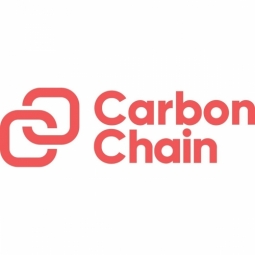
|
Concord's Journey to Industry-Leading Carbon Insight for Trade Portfolio
In 2019, Concord, a leading global independent metals and minerals trader, aimed to pioneer Scope 3 carbon footprinting in the commodities sector. However, the company faced the daunting task of analyzing over 10,000 trades, identifying key upstream assets, and bridging the notorious data gap for extractive emissions. Concord's supply chain emissions were the most significant, especially in the carbon-intensive commodities industry. The company wanted to take a market-leading approach, defining best practice in carbon accounting for commodity trading. Concord needed to quantify its total Scope 3 CO2 output, benchmark its performance, break down the emissions sources, and compare trades, suppliers, and assets. The company required accurate, verifiable, and comprehensive emissions calculations that all stakeholders could trust, covering all of its approximately 10,000 annual trades and the end-to-end supply chain for each one. The in-house execution of this task seemed impossible due to the volume of manual data collection and analysis required and the shortage of reliable emissions data for the extraction, production, and transport of commodities.
|
|
|

|
Fusina's Initiative to Provide Carbon Footprint Data for Aluminum Products
Niche Fusina Rolled Products (Fusina), an Italy-based aluminum rolling mill, faced the challenge of providing its customers with detailed carbon footprint information for its tailor-made coils, metal sheets, and plates. The company aimed to enable prospective buyers to make informed purchasing decisions based on the average product carbon footprint. Additionally, Fusina wanted to provide customers with a carbon footprint report attached to their invoices, which could be used in their own Scope 3 reporting and product lifecycle calculations. The challenge was to roll out this scheme immediately, starting with marine and road transportation products delivered into Germany, Italy, Benelux, and Scandinavian markets, with the expectation to expand it across all Fusina’s products and countries by early 2023.
|
|
|

|
CarbonChain's Solution for Gunvor's Carbon Disclosure Challenge
Gunvor Group, one of the world's largest independent commodities trading houses, faced a significant challenge when a key customer requested greenhouse gas (GHG) emissions data for all their naphtha trades. This data was to cover the entire supply chain, from the extraction of crude oil and condensate to the delivery of naphtha at the customer gate. However, Gunvor had limited information about their supply chain emissions. They had some calculations for their own vessels, but lacked data for upstream oil and gas activities or for the processing of oil into naphtha, except for their own refineries. To meet the customer's request, Gunvor would have needed to gather raw data from various sources and access time-sensitive, asset-level GHG emissions information, which was difficult, expensive, or impossible to obtain. The data analysis, calculation, and reporting process was set to be a huge challenge, as well as a cost and time burden.
|
|
|

|
Driving Carbon Reductions in Trade Finance: A Case Study on Societe Generale and Concord
Societe Generale, a leading European financial services group, was facing a challenge in understanding the carbon footprint of its commodity trade finance portfolio. The company needed granular, actionable data to analyze its trade loan portfolio’s emissions and comprehend the carbon footprint of complex individual supply chains it finances globally. The commodities financed, such as oil, gas, metals, and agricultural materials, are some of the most carbon-intensive products. Therefore, understanding the embedded emissions in these financed trades was a critical first step towards reducing them in line with Societe Generale’s sustainability goals. However, obtaining accurate, asset-level emissions data for extractive and agricultural commodity supply chains was complex. The company sought to support its clients, like Concord Resources Limited, in their journey towards carbon neutrality, but lacked the necessary data to do so effectively.
|
|
|
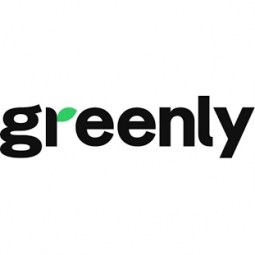
|
aKagreen's Journey to Carbon Neutrality with Greenly
aKagreen, a certified B-Corp, is committed to greening work and living spaces to cultivate well-being through plants. However, the company was facing a significant challenge in terms of its carbon footprint. Despite its environmentally friendly mission, aKagreen was producing a substantial amount of greenhouse gas emissions. The company's 2020 carbon footprint report revealed that digital operations accounted for 63% of its emissions, service purchases 11%, and fixed assets 7.1%. This amounted to 11 tCO2 per employee, equivalent to 76 round trips between Paris and New York. aKagreen was aware that preserving the environment was at the heart of its DNA and business, and it was necessary to reduce its carbon output as much as possible. The company needed to accurately identify its sources of carbon emissions to structure an environmental policy and draw up an action plan for long-term emission reduction.
|
|
|

|
Aladom's Journey Towards Carbon Neutrality with Greenly
Aladom, a French online platform that connects users to a variety of services, was seeking a simple and effective solution to conduct their Greenhouse Gas (GHG) report. The company wanted to evaluate the impact of digital technology on their carbon footprint. The challenge was to accurately measure their GHG emissions to structure their environmental policy and devise an action plan for long-term emission reduction. Aladom was committed to acting for a more responsible digital world and a better future, but needed a reliable tool to quantify their emissions and guide their sustainability efforts.
|
|
|

|
Arca Conseil's Journey to Carbon Neutrality with Greenly
Arca Conseil, a specialist in data retrieval, was seeking a simple and efficient solution to measure their greenhouse gas (GHG) emissions. The company's objective was to control and reduce their environmental footprint, a crucial step towards achieving a Net Zero trajectory. However, the challenge was not just about measuring direct and energy-related emissions (Scope 1 & 2), but also indirect emissions caused by service providers and services used by the company (Scope 3). The company needed a comprehensive solution that could accurately calculate their total carbon footprint, which would then allow them to structure their environmental policy and devise an action plan for long-term emission reduction.
|
|




